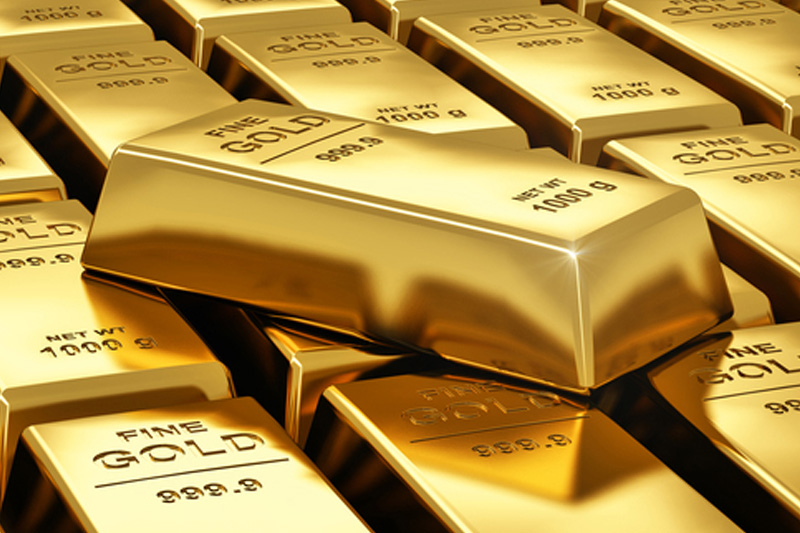By Barani Krishnan
Investing.com - Will the $2,000 magic return to gold soon?
The yellow metal continued its journey southward of that level on Monday, hitting a 10-day low of just above $1,950 an ounce, as the initial shock over the Russian-Ukraine war seemed to wear off amid signs that diplomacy might actually work in the conflict.
Traders also seemed to be girding for the Federal Reserve’s much-awaited announcement on Wednesday of the first pandemic-era U.S. rate hike.
“Gold prices got hit with an uppercut as geopolitical tensions somewhat eased and as investors brace for the beginning of Fed tightening later this week,” said Ed Moya, an analyst at online trading platform OANDA.
“Gold is a tricky trade right now and could be subject to further profit-taking as Wall Street tries to get a better handle on how high the Fed will take rates this year. Expectations are for somewhere between 6-7 rate hikes but the risk for more remains elevated until we see a confirmed de-escalation with the war in Ukraine, elevated commodities prices will continue to unleash widespread price increases going into the summer.”
The most-active gold futures contract on New York’s Comex, April, settled down $24.20, or 1.2%, at $1,960.80 an ounce. The session low was $1,952.20, which marked a bottom since March 4.
Moya said gold selling could target $1,930 next.
“But that should be a level where buyers emerge. A quick resolution with geopolitical tensions seems unlikely and while the Fed will show they are tackling inflation, the Fed is not in a position to make aggressive calls on tightening until they have a better handle of the situation.”
The Fed's Federal Open Market Committee, or FOMC, is widely expected to raise rates by 25 basis points, or a quarter percentage point after its Tuesday-Wednesday meeting. The FOMC had left rates virtually at zero since the Covid-19 outbreak of March 2020. Many economists, however, think what the Fed will do won't be enough.
The test for the central bank and Chairman Jerome Powell will be to curb inflation running at 40-year highs by raising interest rates just enough to cool demand — and not to kill it or send the economy into a recession.
Powell’s problem though is that his job has been made remarkably more difficult by Russia’s invasion of Ukraine.
The war, as Bloomberg noted in a commentary last week, has unleashed such turbulence in global financial and energy markets that will be hard to suppress, regardless of the tools in the Fed’s kit — whose remarkable powers the Chair never fails to remind us of at each monthly news conference.
“It’s going to be very tricky,” Moody’s Analytics Chief Economist Mark Zandi was quoted saying by Bloomberg, pointing to rising energy bills — along with slumping stock and credit markets — that could also sap consumer demand, increasing the chances of a recession.
“The economic plane is coming into the tarmac at a very high rate of speed, buffeted by severe crosswinds from the pandemic, with a lot of fog created by uncertainty due to geopolitical events,” Zandi said.
Johan Grahn, head of ETF Strategy at Allianz (DE:ALVG), also told Investing.com recently that a 25-basis point hike “would be a no decision as opposed to a decision … and it’s not going to pull the handbrake on the inflation momentum.”
Initially winning praise for the Fed’s quick stimulus action that helped prevent the Covid‑19 recession from turning into an outright depression, Powell is now the poster-boy for everything gone wrong with inflation — especially after his admission that the central bank had totally misread the problem as being transitory.
On top of a maximum of seven potential rate hikes this year — as per the number of FOMC calendar meetings — there is a yet-to-be-specified reduction in the Fed’s balance sheet, which now stands at $8.9 trillion after the central bank loaded up on Treasuries and mortgage-backed securities to support the economy since the Covid outbreak in March 2020.
That action will reduce the cash in the financial system—but it will also bring uncertain consequences for bond and stock markets. The danger is that if inflation doesn’t begin to subside in response to these initial moves, policymakers will end up raising rates too high, sending the economy into a recession and financial markets into a slump.
To recap: a 25 bps, or quarter percentage point, hike is expected to cause little or no turbulence across markets next week, and possibly embolden further risk-takers in stocks to bonds, forex and commodities.
A 50 bps, or half percentage point, hike will have some serious consequences, with gold, possibly even oil, plummeting amid renewed crash on Wall Street. Inflation could pause briefly too — but more will certainly need to be done by the Fed if it doesn’t want any subdued price pressure to come roaring back.
